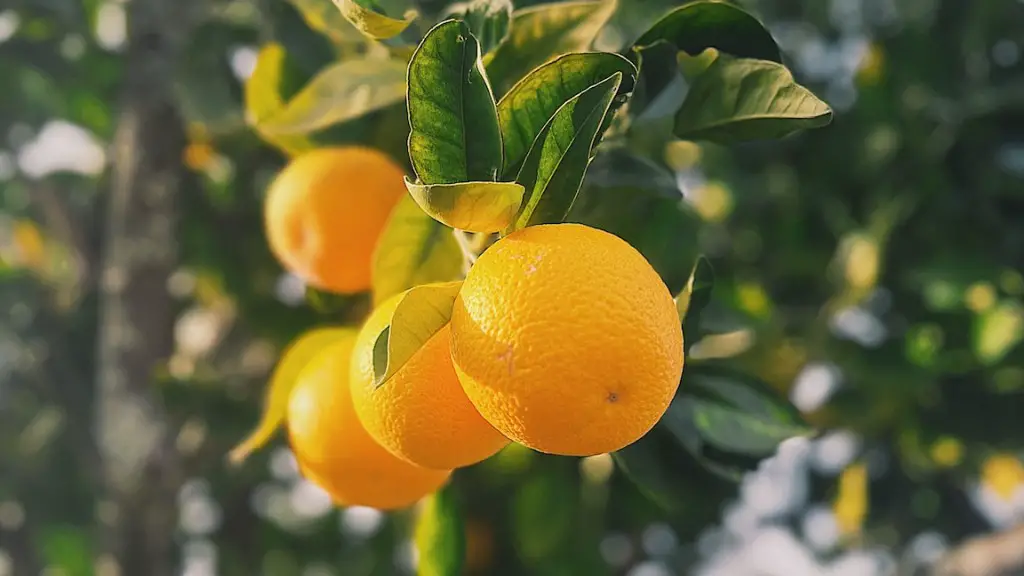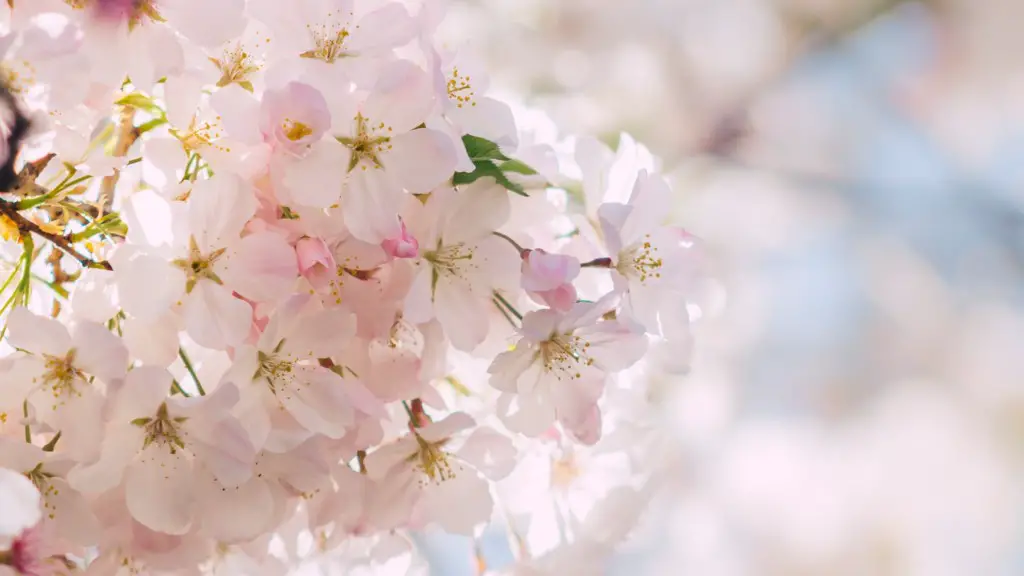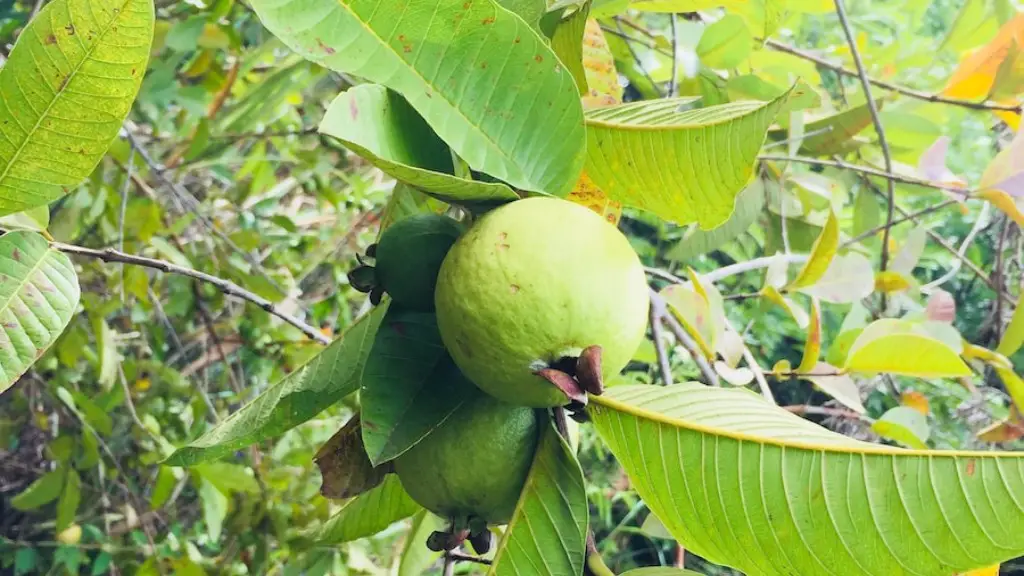When a lemon tree blooms, it can be a very exciting event for the gardener. The bright white, fragrant flowers form on the tree and can last for around two weeks. In this time, the fragrance of the blossoms will fill the air and the sight of their abundance brings a sense of intimacy and joy to any setting. This special moment marks the beginning of a cycle of growth and fruit production that lasts up to nine months.
For a gardener, it’s important to understand the flowering cycle of a lemon tree in order to deliver an abundant yield of delicious fruits. If flowering is happening too early or late in the season, the crop size and quality can be affected. It’s also important to consider that a lack of pollination can be a problem, so, if bees or other pollinators aren’t present, the gardener will have to manually pollinate the flowers.
Understanding the life cycle of a lemon tree, from flowering to fruiting, is essential to helping the tree produce healthy fruits. During the flowering period, the tree will start to form green fruits while it is still in bloom. Once the flowers start fading, it’s time to provide proper nourishment and prune the branches of the tree to ensure good air circulation and an efficient pollination process.
The lemon tree will then enter a period of growth during which the green fruits will mature into full-grown, juicy lemons. Through the summer months, the gardener should still be paying attention to the soil and keeping the tree well-watered and fertilized. During the later period of the year, the fruits can begin to ripen, and around October, the tree will be ready for harvesting.
When a lemon tree blooms, it is a truly wonderful sight and it signals the start of a new cycle of fruit production. The gardener should be mindful of the entire life cycle of the tree and should provide the proper care and attention to ensure an abundant and delicious crop of lemons. With careful nurturing and enough time, the sight of a lemon tree in bloom is well worth the wait.
Pollination
When a lemon tree blooms, ensuring proper pollination is essential to ensure a fruitful harvest. As the fragrant white flowers open up, they are susceptible to different factors such as wind, water, and other elements that can disrupt the process of pollination. Having bees or other pollinators is the best way to ensure that the flowers will be properly pollinated, but if they aren’t present, the gardener must manually pollinate the flowers.
Manual pollination involves understanding why pollination fails so one can take proactive steps to ensure it is successful. Before attempting to manually pollinate, it’s important to make sure that the environment is set up to support pollination. By taking care to prune the branches of the tree to ensure good air circulation and providing it with the proper nourishment, one can help make sure that pollination will be successful.
Manually pollinating a lemon tree is a relatively simple process, but it is also a labor-intensive task that can be done quickly and efficiently. Once the gardener knows how to properly pollinate the flowers, they can ensure that their lemon tree produces a plentiful harvest.
Fruit Production
After the pollination process is complete, the lemon tree can begin to form the fruits which will be harvested. Once the green fruits have formed, the gardener can start to provide the nourishment and care needed to ensure a healthy tree and abundant harvest. By ensuring the proper nutrition and pruning the branches of the tree to provide better airflow and light, the gardener can give the tree the best chance for a healthy crop.
During the summer months, the gardener should be mindful of the soil and keep the tree adequately watered and fertilized. Over the course of the summer, the fruits will start to mature and will become juicier and more abundant as the tree enters a period of growth. By October, the tree should be ready to be harvested and enjoyed by everyone.
Harvesting and Seasonality
When the time comes to harvest the lemons, the gardener should pay close attention to seasonality. Harvesting during the hottest months may result in the fruit drying out quickly and not being as flavorful. Harvesting at the right moment and as close to when the tree bears the most fruit will help ensure a sweet and juicy lemon. The taste and texture of the lemons can also be affected by their ripening stage, so the gardener must be mindful of the maturity of the fruit.
When harvesting lemons, the gardener must use caution as excessive rain or wind can damage the fruits. Also, harvesting too soon or too late can have a negative effect on the crop. Harvesting when the fruit is at its peak will ensure a bountiful crop and superior flavors from the lemon tree.
Storing and Preservation
Once the lemons are harvested, they must be stored and preserved properly to ensure their freshness and prevent spoilage. If they are not properly stored, the flavor of the fruit will suffer, and they may rot quickly. Freshly-harvested lemons should be stored in the refrigerator and consumed within a few days. If they are to be kept for a longer period, they must be wrapped in paper and frozen.
For maximum longevity, it is best to freeze the lemon juice and pulp separately. The juice can be stored in containers or ice cube trays, while the pulp should be kept in a tightly sealed bag. If lemon zest must be preserved, it should be finely grated, spread out evenly on a tray, and placed in the freezer for later use.
Preserving the Tree
Caring for and preserving a lemon tree is not only important for harvesting more fruits, but also for ensuring the longevity and better health of the tree. Pruning and providing the tree with the exact nutrients it needs at the exact time will help keep the tree healthy and increase its lifespan. Regularly replenishing the soil with compost and mulching will help protect the roots of the tree and ensure better growth. Regularly maintaining the tree is essential to preserving it and keeping it healthy.
Caring for a lemon tree is a delicate and intricate task that requires a lot of knowledge and precision. Knowing how to care for the tree and when to harvest the fruits is an essential part of ensuring a successful harvest and a productive lemon tree. The sight of a lemon tree blooming and the smell of its fragrant flowers is a truly wonderful experience that all gardeners should strive to experience.




